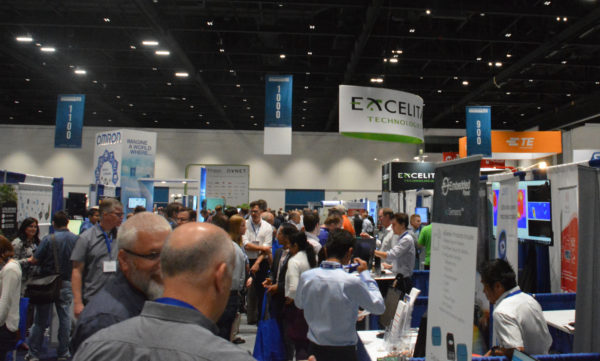by Dot Cannon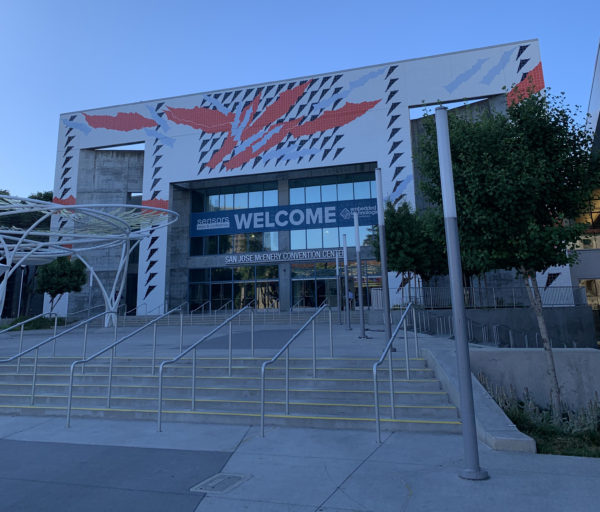
“I’m really excited to be here to talk with you about this amazing machine,” said Ball Aerospace Senior Program Manager Allison Barto.
The “amazing machine” to which she was referring, during her keynote for Sensors Expo and Conference’s Day One in San Jose’s McEnery Convention Center, is the James Webb Space Telescope.
Allison, who is the Senior Program Manager on the project, told the audience of a project of almost unimaginable scope.
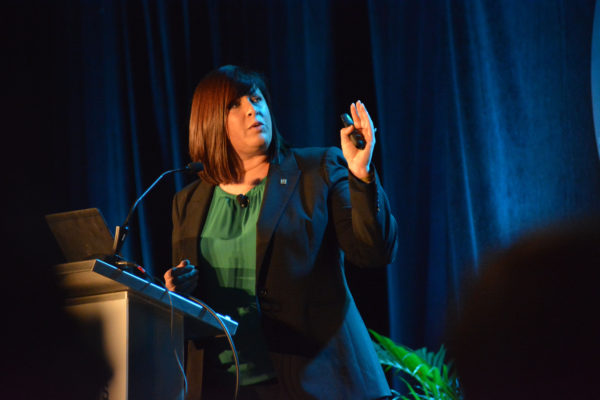
“James Webb Space Telescope launches in 2021. We’ve been working on it for two decades now,” she said.
The purpose of this two-decade-long project?
“We want to understand the evolution of galaxies,” Allison explained. “So we want to look back at the first stars that formed after the Big Bang.
“We’re going to look back in tiem at these very faint objects in the early universe.”
Among the challenges of creating a device that can accomplish this goal, though, is designing it to be precise, accurate–and durable. Oh, and it has to fit on a spacecraft, too.
The James Webb Space Telescope will be comprised of eighteen mirrors, each twenty-two -and-a-half feet in diameter. The process of design includes testing for durability.
“Launch is really violent. The mirrors (go through) vibration testing. We really have to design for robustness,” Allison explained.
And to fit on the spacecraft? The design team wound up creating the telescope so that it can fold up, in a style not dissimilar to origami!
Allison’s keynote was the start of a very interesting thirty-fourth edition of Sensors Expo and Conference. This is the technology industry’s largest event dedicated to sensors, connectivity and the Internet of Things.
Approaches to LIDAR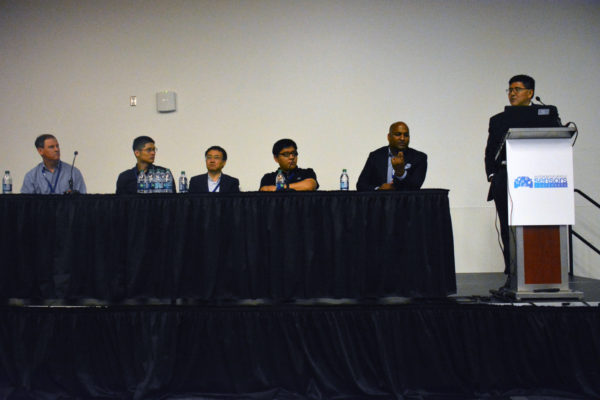
Just after the keynote, the concurrent “Autonomous Vehicles Sensors Conference” hosted two LIDAR-related events. Speakers from the automotive field took a look at trends in the use of LIDAR.
Speakers offered perspectives on different approaches to LIDAR systems, and forecasts for its future in the creation of autonomous vehicles.
Considerations they addressed included the purpose of LIDAR, the architecture around which the systems are built and, of course, scaling down the hardware–and the cost–of deploying the systems.
Asked by Conference Chair Willard Tu when they expected to see LIDAR capabilities become more widespread, panelists came up with answers varying from 2020 to 2025. Costs, one panelist predicted would drop dramatically: from around $10,000 for a LIDAR system today to $500 in the future.
On the show floor
Getting to check out the Expo floor is always interesting at Sensors Expo and Conference.
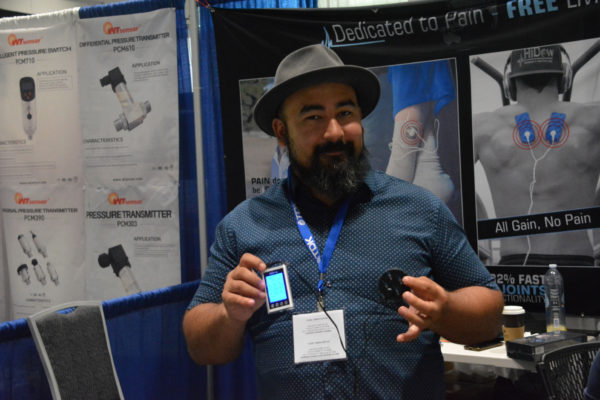
This vendor demonstrated, hands-on, how his vibrating device can remove pain like, for example, a tense “computer neck”. (Ahhh….)
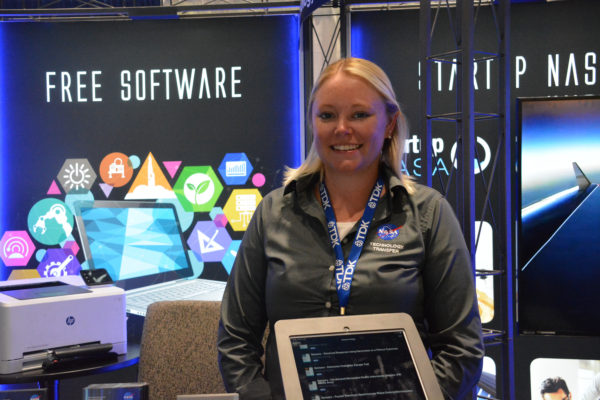
Startup NASA was offering information to innovators.
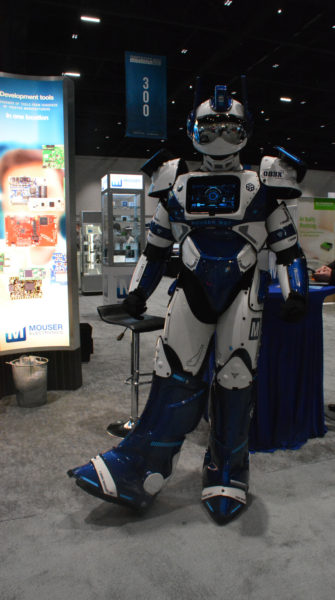
And a friendly Mouser robot posed for a picture!
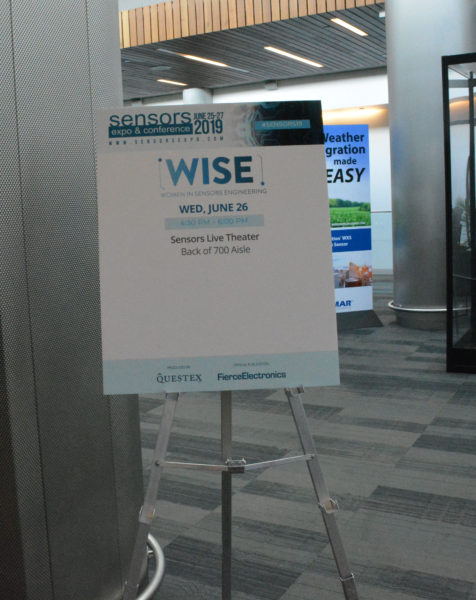
The day concluded with the Women in Sensors Engineering panel.
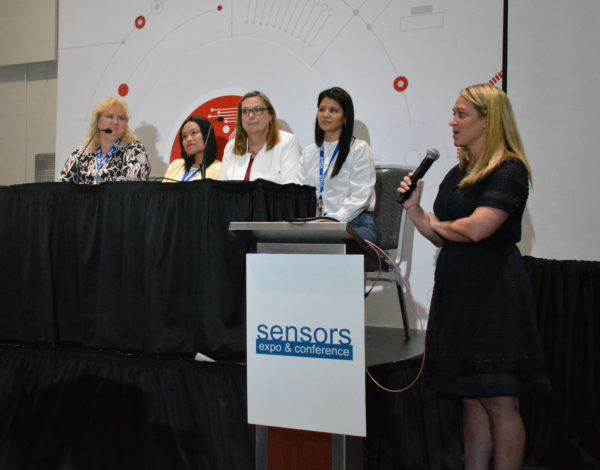
Randstad Engineering Senior Vice President Angie Keller talked with four top women engineers about their career paths, experiences and advice.
Challenges of the career field, work-life balance, mentorship and advice to the next generation of women engineers were among the topics they covered.
What a fantastic Day One, Sensors 2019! We’ll see you in the morning.

